Fall is upon us, bringing the final triathlons of the season along with cooler weather. A few short weeks ago, triathletes were only concerned about keeping cool, but Autumn is a fickle mistress. This time of year, you should be prepared for everything from frosty mornings to mid-summer heat, quite possibly over the course of a single race.
Cold weather triathlons present an optimization problem: how little time can you spend putting on clothes without getting cold enough to compromise your race. Here are my criteria for cold weather triathlon gear:
- Easy to put on. Many a race has been won or lost in the transition area. Also, trying to wrestle on gear on the bike as you zigzag through throngs of riders is a bad idea.
- Easy to take off. It’s not uncommon for temperatures to climb 10 degrees or more over the course of a morning.
- Disposable. Individual definitions of “disposable” gear will vary (see #4). If you ditch gear during the race, make sure you do it at an aid station. Littering is not only morally reprehensible, but it could also earn you a big fat DQ.
- Inexpensive. My parents chide me for being “pathologically cheap”. I prefer “thrifty”. I’m certainly not one to rush out and buy a whole new racing wardrobe based on a nasty weather forecast.
People’s cold weather needs vary tremendously. Like two guys on my university cross-country team, one who was always dressed for an Everest summit attempt and the other who sported a singlet until January. Here are three tricks for chilly triathlons.
1. Stock up on stockings!
Find a pair of stockings that fit snugly over your arms. Cut off the waist and feet and roll the stockings into rings. These take a few seconds to slip over your wrists and roll up your arms in transition or on the bike. Just make sure you put them on the right direction to roll up your arms. This is much quicker than tugging them over wet arms and warmer than damp clothes worn under your wetsuit.
Actual arm warmers also do the trick, but they can be harder to roll up and painful to toss away, especially if they are the sweat-wicking-graduated-compression-organic-lambswool variety that triathletes favour.
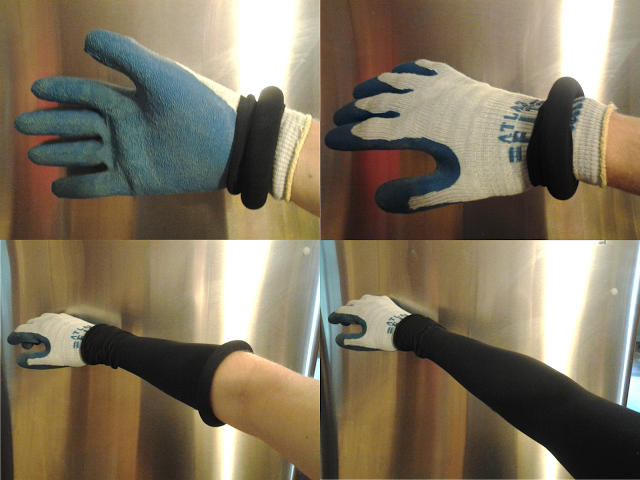
If you are using arm warmers, you are likely also putting on gloves. My system is to place the stocking rings over the cuffs of the gloves. I put on the gloves and rings together in transition and roll up the stockings once I’m out on the bike. My favourite gloves for racing are cheap (i.e. disposable, if need be), generic work gloves. The grippy, rubberized palms make for confident braking and shifting.
Note: If you are a male who is uncomfortable shopping for women’s hosiery, consider raiding your wife/girlfriend/mom’s undergarment drawer. But be warned; That situation could get way more awkward than any shopping trip.
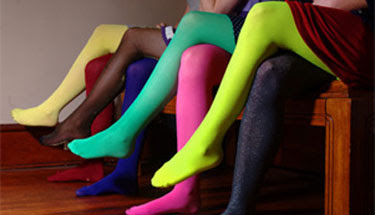
2. “Hypoventilate” your gear!
All those ventilation holes in your helmet and bike shoes are a boon in the heat, but a liability when the mercury plummets. A simple, cheap solution is to cover them with tape. Clear packing tape does the job quite well. Taping over your helmet vents may even improve your bike split a tiny bit due to improved aerodynamics!
You don’t want to get cold feet—of any kind—at a triathlon. Cover any holes or mesh in your bike shoes with tape. Remember: tape toes for toasty tootsies.
If you’re using a standard road helmet, you can even stretch a bathing cap over the entire helmet. This also makes an excellent poor man’s aero helmet. You may have to endure funny looks and snickering, but the crushed dreams of your rivals are a potent salve for wounded pride.
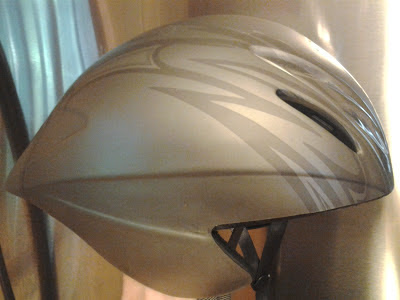
3. Get Space Age!
Pick up a space blanket (aka Mylar/emergency blanket). They are available for a few bucks at any outdoors store. Cut out a piece the shape of your torso and tuck it under your trisuit/jersey before you put on your wetsuit. Use multiple layers for extra warmth. You can wrap your entire torso, but you’ll find that the chest is the key heat loss area. The material can be a little crinkly at first, but you’ll soon forget it’s there and it really cuts the wind chill.
BONUS!
For very cold races, pro triathletes have even been known to keep their wetsuits on during the ride. This strategy is probably not advisable unless you have a wetsuit sponsor or money to burn. I’m sure that more than a few befuddled noobs have also found themselves in this position.
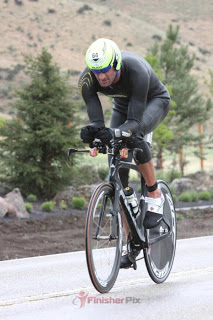
But for extremely cold races, this is really your only option:
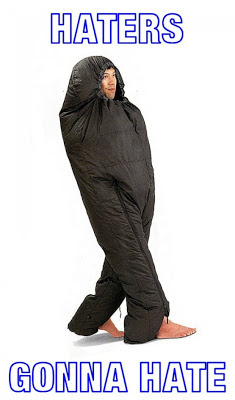
Do you have any cold weather racing tips to share? Join the conversation on Facebook, Twitter or in the comments below.







